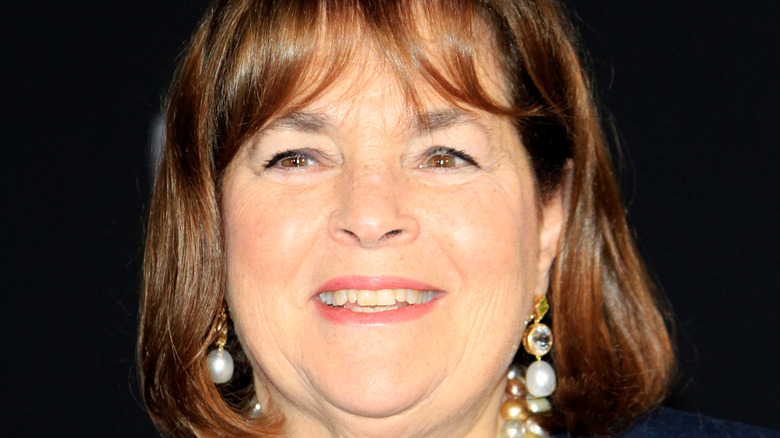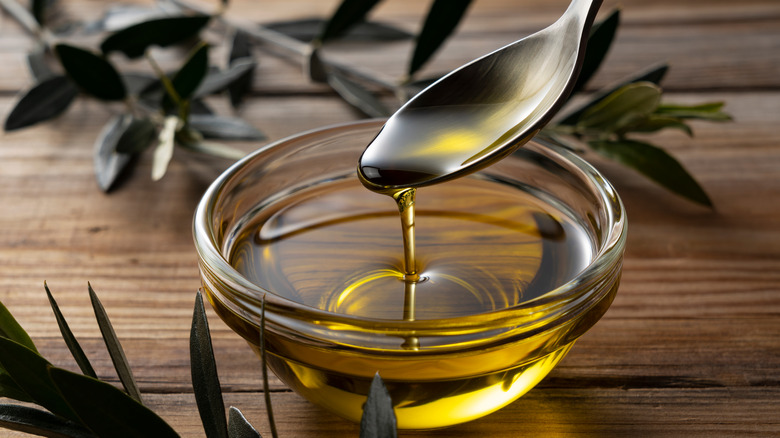The Reason Ina Garten Doesn't Care For Italian Olive Oil
Correction 6/14/22: A previous version of this article discussed the prevalence of fraudulent or diluted olive oil. This is not a common issue in the olive oil industry.
With a fanbase that ranges from millennial women to truck drivers (via the Washington Post), one of the world's most beloved food personalities is Ina Garten. However, Garten didn't start out in the culinary industry. She worked at the Office of Management and Budget in Washington, DC as a nuclear energy policy analyst. At night, she channeled Julia Child, working her way through Child's "Mastering the Art of French Cooking" after returning from a France trip with Jeffrey, explains Eating Well.
Dissatisfied with her job, the Washington Post reports that in 1978 Garten purchased a specialty food store in the Hamptons, already christened Barefoot Contessa. As its reputation grew, she outgrew the 400 square-foot store, moving to a larger space in East Hampton. But even with her explosive growth in the tony enclave, according to Eater, her first cookbook (published in 1999) was heavily self-funded.
With cookbook number 13 now in the works (via Eating Well), and a whopping 3.6 million followers on Instagram, Garten is now one of the most trusted names in food. So when she makes suggestions, we listen.
Garten counts olive oil as one of her pantry essentials, according to Bon Appétit, along with other staples like whole grain mustard and Maldon sea salt. But when Garten advises using good olive oil in her recipes, she doesn't mean Italian.
Why Ina Garten doesn't use Italian olive oil
Bon Appétit reports that Garten prefers California's olive oil, as she finds the West Coast olives sweeter and less bitter than their Italian counterparts. And the Food Network host doesn't just use the U.S.-grown oil to finish dishes. Garten says California olive oil is great for any kitchen use — from sauteeing to dipping bread to drizzling to dressing salads.
When you think olive oil, California may not be the first place that comes to mind, but OliveOil.com explains that the state has actually been producing the oil since the 1700s. Olive trees arrived with Spanish missionaries (who also brought grape vines for making wine, a California product you are likely familiar with), and soon after they started producing olive oil.
There are many different brands and varieties of California olive oil out there, so we'd suggest sampling a few to figure out which best suits your palate and cooking style. Hey if Ina Garten swears by an ingredient, you know it has to be at least worth a try.

